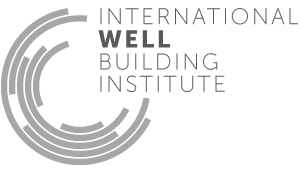Sound masking
- 71 Active furnishings
- 72 ADA accessible design standards
- 73 Ergonomics: visual and physical
- 74 Exterior noise intrusion
- 75 Internally generated noise
- 76 Thermal comfort
- 77 Olfactory comfort
- 78 Reverberation time
- 79 Sound masking
- 80 Sound reducing surfaces
- 81 Sound barriers
- 82 Individual thermal control
- 203 Circadian emulation
- 209 Advanced cleaning
79. Sound masking
Complete silence can be just as distracting as loud environments as they highlight sudden acoustical disturbances and decrease speech privacy. Sound masking provides a low level of background noise that can help lessen the contrast in the case of an aural interruption.
This feature aims to mitigate uncomfortable acoustic disruptions and increase speech privacy by providing low background noise through the use of sound masks.
All open office workspaces use the following:
Prior to the design and programming of the project, all stakeholders, including at a minimum the owner, architects, engineers and facilities management team meet to:

Applicability Matrix
| Core & Shell | Tenant Improvement | New Construction | |
|---|---|---|---|
| Part 1: Sound Masking Use | - | O | O |
| Part 1: Stakeholder Charrette | P | P | P |
| Commercial Kitchen | Schools | Multifamily Residential | Restaurant | Retail | |
|---|---|---|---|---|---|
| Part 1: Sound Masking Use | - | - | - | - | - |
| Part 1: Stakeholder Charrette | P | P | P | P | P |
Verification Methods Matrix
| Letters of Assurance | Annotated Documents | On-Site Checks | |
|---|---|---|---|
|
PART 1 (Design) Sound Masking Use |
Architect | ||
|
PART 1 (Protocol) Stakeholder Charrette |
Policy Document |
| 79.1.a |
The General Services Administration's Sound Matters recommends that sound masking should be considered a technique to achieve acoustic comfort in contemporary offices. |
| 79.2.a |
The General Services Administration's Sound Matters recommends sound masking at 45-48 dBA for open plan workspaces. |
| 79.2.b |
The General Services Administration's Sound Matters recommends sound masking at 40-42 dBA for private offices. |
